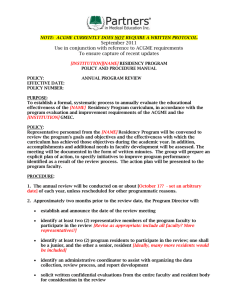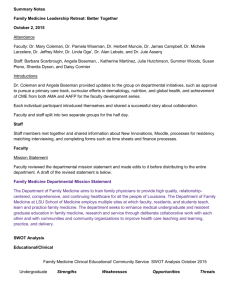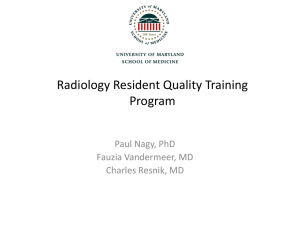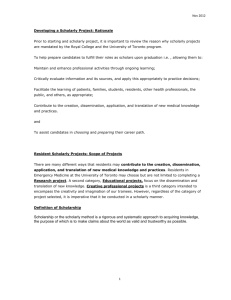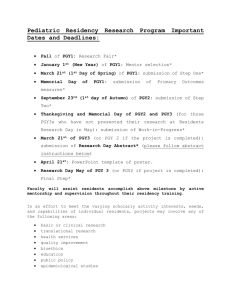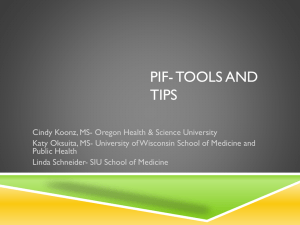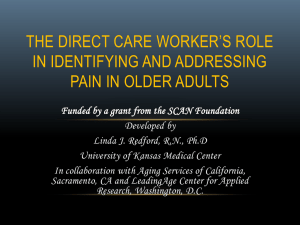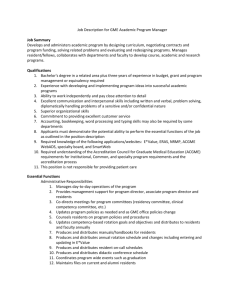the slides.
advertisement
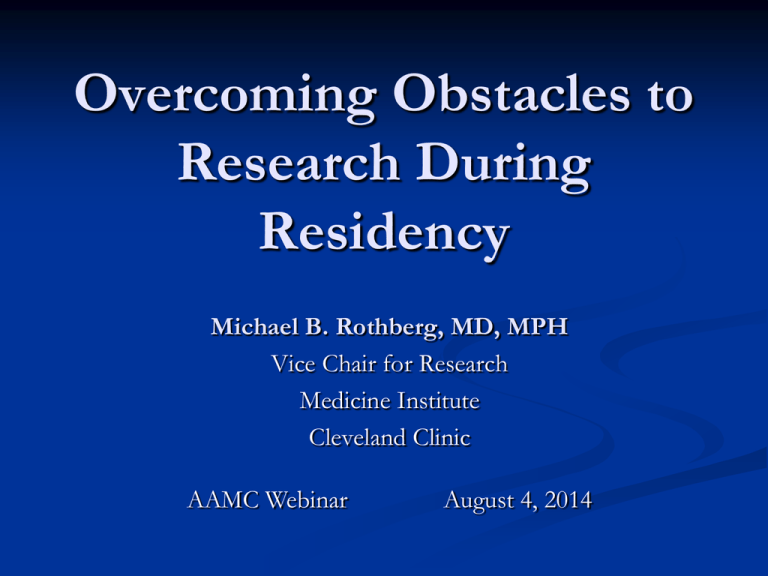
Overcoming Obstacles to Research During Residency Michael B. Rothberg, MD, MPH Vice Chair for Research Medicine Institute Cleveland Clinic AAMC Webinar August 4, 2014 Today's Goals Understand importance of scholarship Review ACGME requirements Identify obstacles Describe a successful program Why is Scholarly Activity Important? Scholarship Discovery (new knowledge) Integration (literature review) Application (quality improvement) Teaching (educational research) Why Scholarship in Residency? Improve resident education Promote quality patient care Provide skills for lifelong learning Enhance analytic skills Develop critical thinking Prepare for academia/fellowship ACGME requirement Understanding the ACGME Requirements Faculty Establish and maintain an environment of inquiry and scholarship with an active research component. From ACGME Program Requirements for Residency Education in Internal Medicine, 2013. Meaning… a) Regular participation in organized clinical discussions, rounds, journal clubs, and conferences. b) Some members should also demonstrate scholarship by: (1) peer-reviewed funding; (2) publication of original research or review articles (3) publication or presentation of case reports (4) participation in national committees or educational organizations. c) Encourage and support residents in scholarly activities. Residents’ Scholarly Activities • The curriculum must advance residents’ knowledge of the basic principles of research, including how research is conducted, evaluated, explained to patients, and applied to patient care • Residents should participate in scholarly activity • The sponsoring institution and program should allocate adequate educational resources to facilitate resident involvement in scholarly activities From ACGME Program Requirements for Residency Education in Internal Medicine, 2013. Journal of Graduate Medical Education, December 2012 Identifying Obstacles Program Directors Faculty time (67%) Funding (62%) Mentors (51%) Resident interest (50%) Technical support (41%) Levine, et al. JGIM 2005; 20:155-9 Residents Rivera, et al. JGIM 2005; 20:366-9. Implementation of a Resident Research Program—The Baystate Experience #1 Resident Interest Resident Research Director Atmosphere of inquiry EBM curriculum EBM conference Work with the best residents Get publications Celebrate/build on successes Research Track Competitive Meets monthly Research elective Participation in SGIM National presentation Mentorship #2 Time Research Director Resident Time Decrease time required Encourage small projects Minimize data collection Expedite IRB approval Increase time available Add protected time for research Create research electives Substitute labor Research assistant Research nurse #3 Technical Support Technical support Statistician Sample size Study design Data collection Analysis Designated IRB member Research assistant IRB forms Data collection or entry Institutional Support Small amounts Part A dollars Internal or external grants Investigators #4 Mentors Mentors Research director Identify potential mentors Explicit expectations for mentors and mentees Easier to find new residents than new mentors Departmental expectations Mentorship qualification for new hires Regional National* Publications First Author Research Assistant 35 Biostatistical Core Research Director Research Nurse 30 25 20 15 10 5 0 20012002 20022003 20032004 20042005 20052006 20062007 20072008 Academic Year *National data not available for 2001-2003 20082009 20092010 20102011 20112012 Lessons Learned Leadership Culture change Excitement Successful Research Director Fellowship trained Broad interests Familiar with institutional resources Access to data Culture Change Takes time Be persistent Focus on new residents Excitement Focus energy on most promising residents Get small victories Build on success
